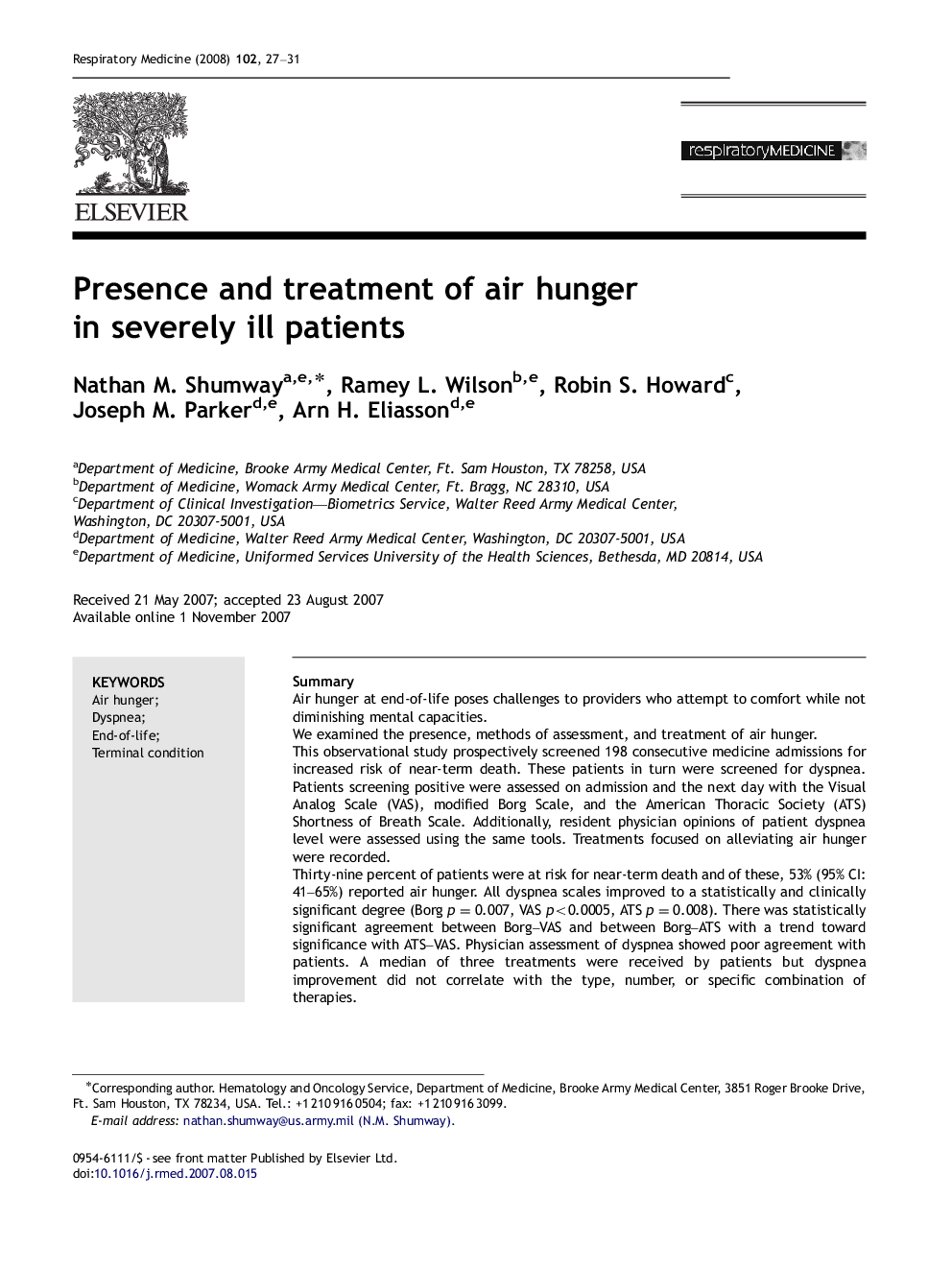| Article ID | Journal | Published Year | Pages | File Type |
|---|---|---|---|---|
| 4211402 | Respiratory Medicine | 2008 | 5 Pages |
SummaryAir hunger at end-of-life poses challenges to providers who attempt to comfort while not diminishing mental capacities.We examined the presence, methods of assessment, and treatment of air hunger.This observational study prospectively screened 198 consecutive medicine admissions for increased risk of near-term death. These patients in turn were screened for dyspnea. Patients screening positive were assessed on admission and the next day with the Visual Analog Scale (VAS), modified Borg Scale, and the American Thoracic Society (ATS) Shortness of Breath Scale. Additionally, resident physician opinions of patient dyspnea level were assessed using the same tools. Treatments focused on alleviating air hunger were recorded.Thirty-nine percent of patients were at risk for near-term death and of these, 53% (95% CI: 41–65%) reported air hunger. All dyspnea scales improved to a statistically and clinically significant degree (Borg p=0.007, VAS p<0.0005, ATS p=0.008). There was statistically significant agreement between Borg–VAS and between Borg–ATS with a trend toward significance with ATS–VAS. Physician assessment of dyspnea showed poor agreement with patients. A median of three treatments were received by patients but dyspnea improvement did not correlate with the type, number, or specific combination of therapies.Dyspnea is common near end-of-life. Borg or VAS scales appear useful in assessing terminal dyspnea and can be employed in assessing terminal air hunger. No individual treatment or combination of treatments significantly improved patients’ dyspnea. However, air hunger significantly improved with hospitalization.
